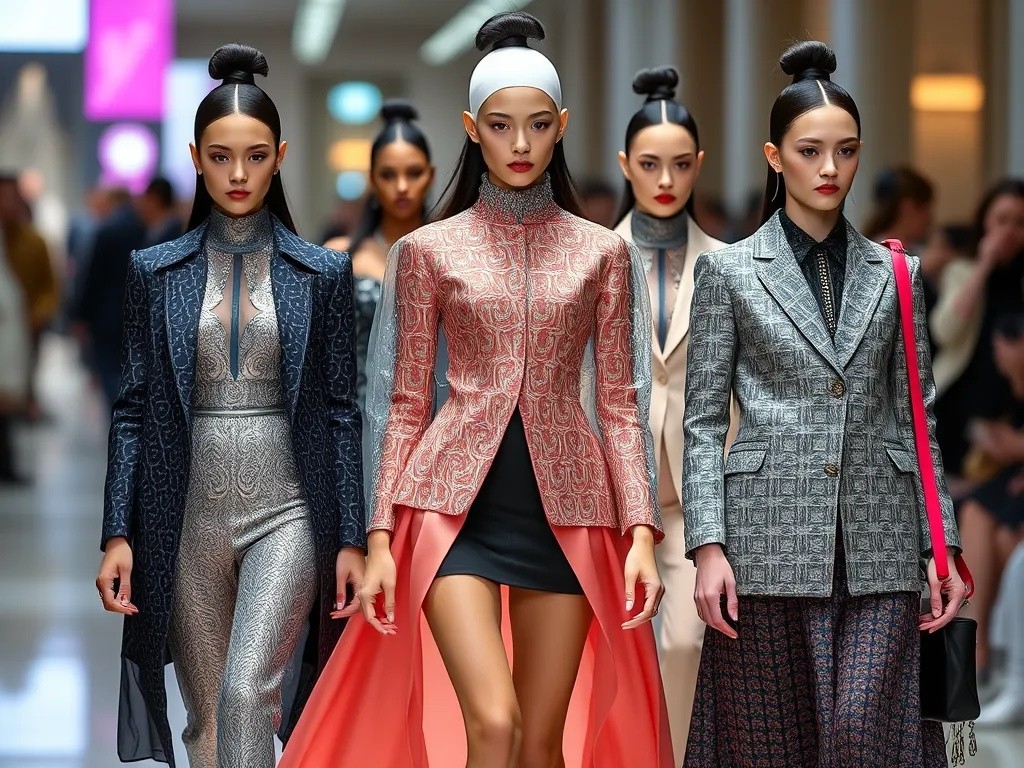In recent years, there has been a significant advancement in the field of Artificial Intelligence (AI) and Augmented Reality (AR). These technologies have become increasingly popular and have the potential to enhance virtual experiences in various fields such as gaming, education, healthcare, and...
Artificial Intelligence Predicted a New Fashion Trend

The fashion industry has always been driven by intuition, creativity, and trend forecasting. However, a revolutionary shift is occurring as artificial intelligence emerges as a powerful predictor of fashion trends, transforming how brands anticipate consumer preferences and market demands.
The Rise of AI in Fashion Forecasting
Traditional fashion forecasting relied heavily on human intuition, cultural analysis, and historical data interpretation. Fashion experts would attend runway shows, analyze street style, and observe social movements to predict upcoming trends. This process, while effective, was time-consuming and often subjective.
Today, artificial intelligence algorithms can process vast amounts of data from multiple sources simultaneously, identifying patterns that might escape human observation. Machine learning models analyze everything from social media posts and runway images to sales data and weather patterns, creating a comprehensive picture of emerging fashion preferences.
How AI Predicts Fashion Trends
Data Collection and Analysis
AI systems gather information from numerous sources to build predictive models:
- Social media platforms like Instagram, TikTok, and Pinterest
- Fashion runway shows and designer collections
- Celebrity and influencer styling choices
- Historical sales data and consumer behavior patterns
- Global economic indicators and cultural events
- Weather forecasts and climate data
Pattern Recognition Technology
Machine learning algorithms excel at identifying subtle patterns in visual data. Computer vision technology can analyze millions of fashion images, recognizing color palettes, silhouettes, textures, and styling elements that are gaining popularity. These systems can detect emerging trends months before they become mainstream.
Predictive Modeling
Advanced neural networks process the collected data to create predictive models. These models consider factors such as seasonal variations, demographic preferences, cultural shifts, and economic conditions to forecast which trends will gain traction in specific markets and timeframes.
Recent AI Fashion Predictions
Several major fashion companies have successfully implemented AI-driven trend prediction systems. For example, fashion tech companies have accurately predicted the resurgence of Y2K fashion, the popularity of sustainable materials, and the rise of gender-neutral clothing lines. These predictions allowed brands to adjust their production schedules and inventory management accordingly.
One notable success story involves the prediction of "cottagecore" aesthetics, which AI systems identified through social media sentiment analysis and visual pattern recognition months before it became a dominant trend across multiple fashion segments.
Benefits of AI-Powered Trend Forecasting
Speed and Efficiency
AI can process and analyze data in real-time, providing fashion brands with immediate insights into emerging trends. This speed advantage allows companies to respond quickly to market changes and consumer preferences.
Reduced Risk and Waste
Accurate trend prediction helps brands make better inventory decisions, reducing overproduction and minimizing fashion waste. This efficiency benefits both company profits and environmental sustainability.
Global Market Insights
AI systems can simultaneously analyze trends across different geographical markets, helping international brands understand regional preferences and cultural nuances in fashion consumption.
Challenges and Limitations
Despite its advantages, AI fashion forecasting faces several challenges. Cultural context and emotional factors in fashion choices can be difficult for algorithms to interpret accurately. Additionally, fashion often involves breaking rules and defying predictions, making it inherently unpredictable.
There's also the risk of creating echo chambers where AI systems reinforce existing trends rather than identifying truly innovative directions in fashion.
The Future of AI in Fashion
As artificial intelligence technology continues to evolve, its role in fashion forecasting will likely expand. Future developments may include more sophisticated emotional intelligence in trend analysis, better integration of cultural and social factors, and improved personalization capabilities.
The integration of AI with augmented reality and virtual fitting technologies could create even more comprehensive fashion prediction systems, potentially revolutionizing how consumers discover and adopt new trends.
While artificial intelligence cannot replace human creativity and cultural intuition in fashion, it serves as a powerful tool that enhances traditional forecasting methods. The combination of AI precision and human insight promises to create more accurate, efficient, and responsive fashion trend prediction systems for the future.



